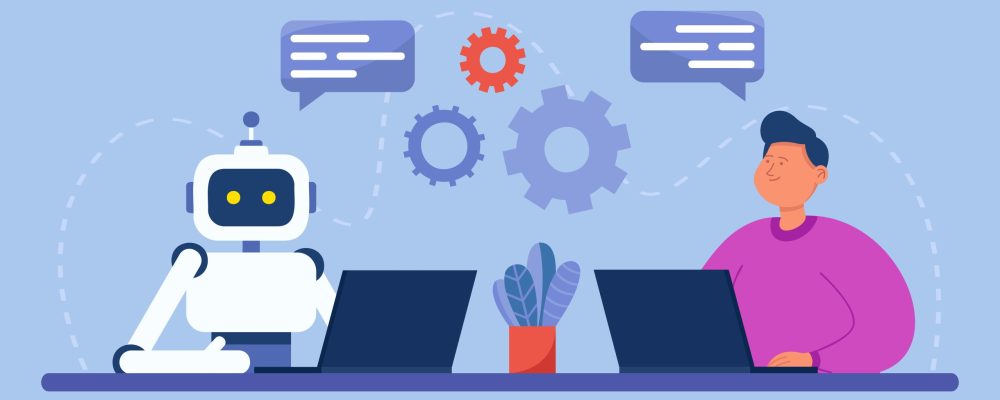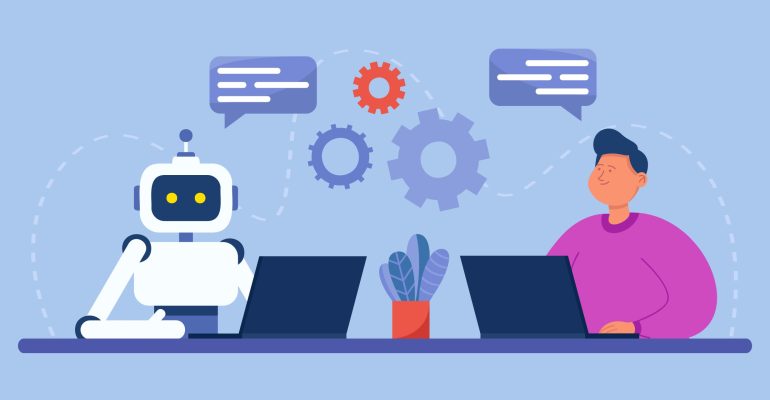
Automation Testing with ChatGPT- Into the Goals of Digital Transformation

Automation Testing with ChatGPT- Into the Goals of Digital Transformation
Businesses are nowadays aligned to innovate to stay competitive in the global market. To increase the ROI and give customers the best experience, it is crucial to automate several business procedures. Test automation is very much essential to ensure the desired user experience and bug-free software. When technology advances, test complexion also increases.
Modern technologies like AI are reaching the horizon with the development of powerful tools like ChatGPT, which allows you to read and write code like a pro-human.
What is ChatGPT?
It is a natural language processing chatbot that produces human-like text for back-and-forth communication with Generative Pre-Trained Transformer 3 (GPT-3)paradigm. The response tone of the ChatGPT can be changed depending on the scenarios because it was trained on a vast amount of data.
ChatGPT employs a conventional model to interact with any user in a chat-line manner. It can even understand 95 different natural languages. It can create original comments, translate languages, and summarise and paraphrase the text’s content.
How Automation Testing can be carried out using ChatGPT?
1. Identify Test Scenarios
Select the test cases and scenarios you want to automate. User interface testing, API testing, regression testing, and other types of testing may be included.
2. Set up the Environment
Ensure that the infrastructure and tools required for automation testing are in place. This involves the integration of ChatGPT as well as test environments and test data.
3. Integrate ChatGPT
Integrate the ChatGPT model into your testing framework. You can use APIs or libraries to communicate with the model. Some common libraries for interacting with GPT models include OpenAI’s API or Hugging Face’s Transformers library.
4. Write Test scripts
Create test scripts that make use of ChatGPT to produce Test inputs or expected outputs. For example, if you’re testing a web application, you can use ChatGPT to generate different user inputs, such as form submissions or navigation commands.
5. Execute Tests
Run the automated test scripts, and while the tests are running, utilize ChatGPT to dynamically generate input data or expected results. This can make it easier to test different situations and edge cases without having to create a massive number of static test cases.
6. Validate Outputs
Compare the actual outputs from your application with the anticipated outputs produced by ChatGPT. If they match, the test passes; otherwise, it fails.
7. Logging and Reporting
Create reports by logging the outcomes of each test execution. This documentation is essential for tracking the progress of your automated testing.
8. Iterate and Maintain
As your application evolves, update and maintain your automated test scripts. Make sure that your ChatGPT integration remains compatible with any changes in your application.
9. Continuous Integration/Continuous Deployment (CI/CD)
Integrate ChatGPT-based automated testing into your CI/CD pipeline to make sure that tests are executed automatically in response to each change in the source code.
10. Monitoring and Alerts
Implement monitoring and alerting tools to keep you informed of any unexpected behavior or faults in your application, which can lead to more ChatGPT testing.
Challenges and Limitations of ChatGPT for Automation Testing
While ChatGPT and similar language models can be valuable tools for automation testing, there are also some potential drawbacks and limitations.
1. Inaccuracy
ChatGPT generates text based on patterns it has learned from training data, and it may not always provide accurate or contextually appropriate test inputs or expected outputs. This can lead to false positives and false negatives in test results.
2. Lack of Domain Specificity
Language models like ChatGPT are trained on a wide range of internet text, and they may not have specific domain knowledge relevant to your application. This can limit their effectiveness in generating test scenarios and data for domain-specific applications.
3. Limited UI Knowledge
ChatGPT might not completely comprehend the difficulties of user interfaces and the interactions between elements on a web page or in a software application. This can lead to incorrect or incomplete test inputs.
4. Complex Test Scenarios
Automation testing often involves complex scenarios, data dependencies, and user flows. ChatGPT may struggle to generate the necessary test cases for such scenarios, especially if they involve multiple steps or conditional logic.
5. Data Privacy Concerns
Using a cloud-based language model like ChatGPT may raise data privacy issues if your testing involves sensitive or personal information because your data is processed on public cloud.
Future of ChatGPT in Automation Testing
ChatGPT is a powerful natural language model that has enormous potential for automation testing. It simplifies the automation testing process, revolutionizes overall growth, and achieves the highest level of quality assurance from speech to code. Advanced language processing, vast knowledge, and other ChatGPT features enable effective and natural testing experiences.
Sapizon Technologies is among the top software testing companies that deliver bug-free products to clients.